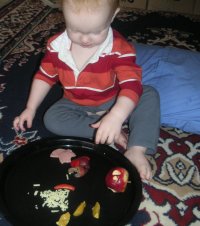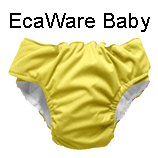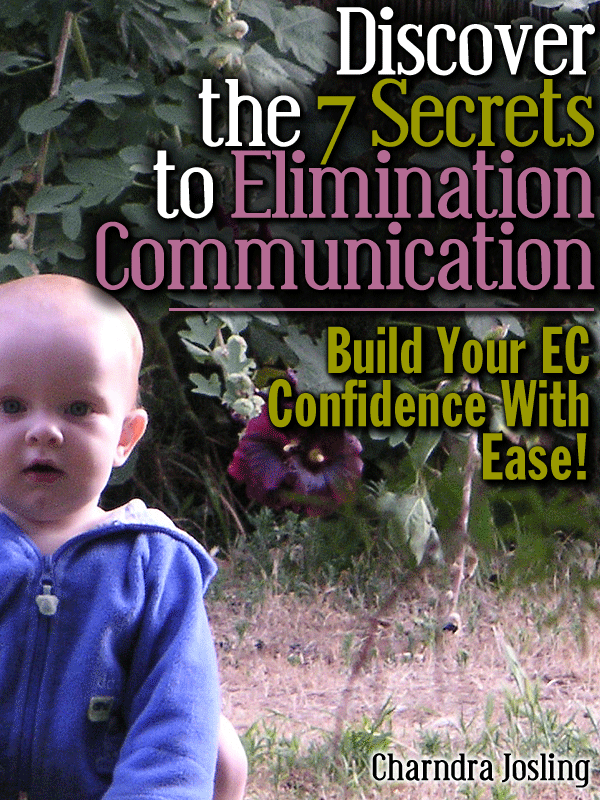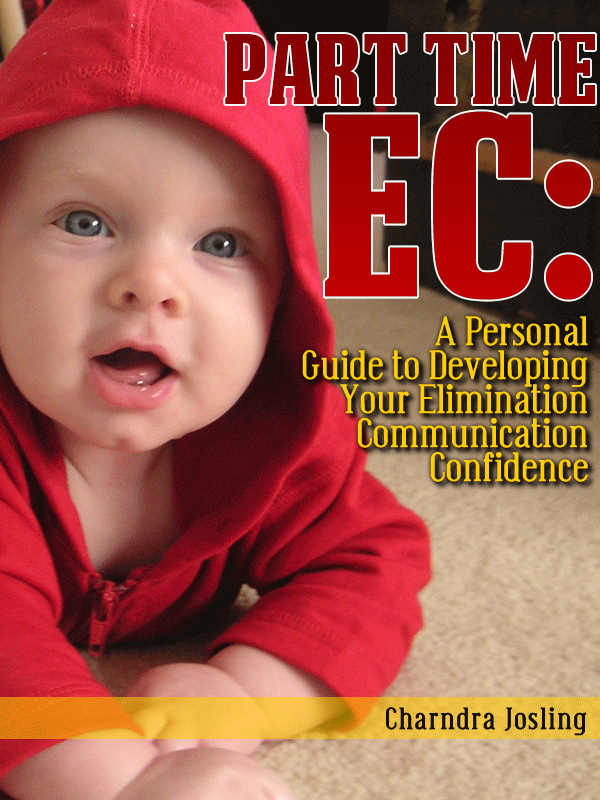Elimination Communication and the Baby Led Solids Approach…
How practicing Elimination Communication Supported this Baby Led Solids Approach
– As soon as anything effected the other end, I cut it out, this meant I wanted to keep it all soft out the other end so that he didn’t have to strain – so the baby-led eating managed that, as he would get bored of eating / have had enough after a really short time, and this seemed to correlate to what his system needed. We’d say he ate like a fish – whatever he could eat in 5 minutes, as that is what he seemed to do! As soon as he started playing with it, that was the end of his meal – he’d had enough. Of course, one of the benefits we get with EC is the immediate feedback if something doesn’t agree with their system yet – there will be a pretty quick ‘elimination’ response if his system wasn’t ready for it.
– I’ve noticed that as I tend to give him the same foods for a few days, this helps him adjust – when we are having odd foods and lots of foods, he’ll have more accidents, if similar, better signalling and continence. As his system hs matured, he has eaten more variety. It is interesting to note that certain digestive enzymes are not produced in their systems until around eighteen – twenty four months, and it was around eighteen months that he became fully independent for poos (before then I would hold him over a toilet), and also, what he was eating no longer made much difference to his timing. Basically it became like regular stuff about then. (and goodness I’m glad I don’t have to wipe it off his body.)
Some Books and Related Baby Led Weaning Resources:
Baby-led Weaning: Helping Your Baby To Love Good Food
A Simple Reference Guide to Baby-led Weaning
Nourished Baby
My Child Won’t Eat!: How to Enjoy Mealtimes Without Worry
Read More of our Experiences with a Baby-Led Introduction to Solids…
Hello Hunters! Welcome to Tribal Baby. Let’s Get to That Icon!
The Hunt will be all through August: Join the Great Cloth Diaper Hunt here to win many very cool baby and toddler prizes…
Visit the Tribal Baby Hunters Thread…
Hello Hunters! Welcome to Tribal Baby.
I started Tribal Baby back in 2005 shortly after my first son was born to help share my experiences with elimination communication.
At that time there were two books available, and little else besides online forums and a few blogs which no longer exist. I used the site as a way to blog about our EC journey as I discovered many fascinating things via this ancient way of connecting with my baby. I wanted to share the thrills I experienced. We did EC from when he was born, it was great fun. On the sidebar of Tribal Baby you can see a link where I share our personal experiences as a collection…
Since then, I have another son and did Elimination Communication with him from birth as well. A different journey, as he had CTEV (Talipes, or a clubfoot) and so was in a series of 12 plaster casts until he was 3 months old and then a brace 23 hours a day until he was about 1 year old and then for 12 hours a day (well, nights) until just days ago, at the end of July when he turned four. It has been a long journey also since my little boy was also diagnosed with a Global Developmental Delay and PDD-NOS, an Autism Spectrum Disorder and which requires weekly speech therapy and occupational therapy. I nearly passed out when I realised this therapy costs $2200 a term! We do thankfully get assistance from the Australian government for some of the costs. Perhaps my helpful bundle of elimination communication resources will help our family.
My Helpful Bundle of Elimination Communication Resources
I recently released all my resources as an eBook for mothers interested in EC to buy for $2.99. It’s called simply “Part Time EC” as that is how everyone starts, and how many families continue with elimination communication with the busy busy lives of today.
I included the 4 bonus guides I have developed to help with aspects of practicing EC, Preparing for EC with your Baby, Baby Led Pottying, Elimination Communication and Travel and Reconnecting Tips for Potty Pauses, and my popular “7 Secrets of Elimination Communication“, which was the free online guided tour that I created to get all this started.
Our Prize Donation for the Great Cloth Diaper Hunt:
Tribal Baby’s prize donation is a pair of EcaPants from EcaWare Baby: Lisa has again generously donated a pair on behalf of Tribal Baby. her pants are fabulous! I used them all the time with little Jett; they really are easy to use.
Join Lisa of EcaWare Baby on facebook
– Charndra
P.S As you wander around my site you might decide to download this free eBook and see what this EC thing is all about. You’ll be joining over 2500 others who have read the 7 Secrets to EC… Elimination Communication and Modern Cloth Diapers are an excellent match for one simple reason: less washing.
Let’s Get Started!
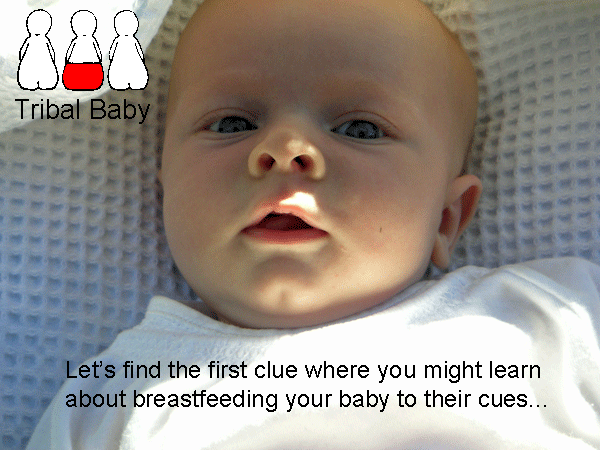
This is my son Maven (Diaper Free!) at 2 months old. Find him again and you've found another clue!
Baby-Led Solids: an Exercise in TRUST
Baby-Led Solids
Baby led solids – the easy way to introduce solids at the perfect pace for your individual baby’s needs!
Baby Led Solids is an Exercise in TRUST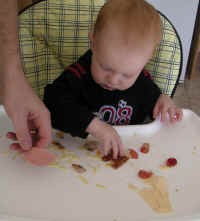 .
.
Baby led solids is basically an ongoing exercise in trust. It involves a shift in approach- from being the person ‘managing’ the baby’s eating, to one of trusting the baby’s instincts about what they eat, when and how much. Considering the burgeoning levels of obesity, any way we can support baby’s natural appetite awareness, starting by breastfeeding to the baby’s needs (feeding to cue), seems the logical way to go. Mother nature has provided a pretty good system.
Following a baby-led approach turns out to be reassuring, a personal challenge and enlightening all at once. I have at times basically had to force myself to accept Maven’s natural awareness of his appetite, and this has reinforced to me the importance, and safety net, of sustained breastfeeding. As he gains so much of his nutritional needs from breast milk, he needs to only ‘top up’ his diet with his whimsical toddler eating patterns. Most reassuring really, not having to feel I should be coaxing him to eat all day. Instead, all that is needed is to offer a wide range of options over the week.
